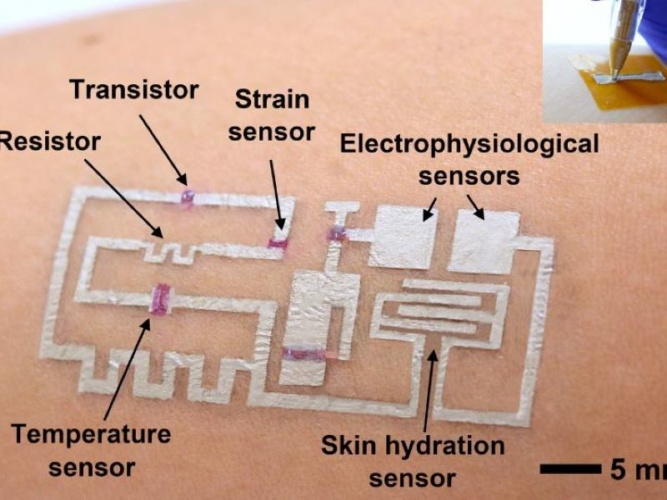
This the claim of researchers in the US whose multifunctional sensors and circuits can be drawn on the skin with an ink pen.
Novel printed electronics promise personalised bandages
The team, led by Cunjiang Yu, Bill D. Cook Associate Professor of Mechanical Engineering at the University of Houston, report their findings in Nature Communications.
The drawn-on-skin electronics are comprised of three inks - including conductors, semiconductors, and dielectrics - that are drawn on-demand to develop devices such as transistors, strain sensors, temperature sensors, heaters, skin hydration sensors, and electrophysiological sensors.
According to the University of Houston, the drawn-on-skin electronics seamlessly collect data, regardless of the wearer's movements. They also offer other advantages, including simple fabrication techniques that do not require dedicated equipment.
"It is applied like you would use a pen to write on a piece of paper," Yu said in a statement. "We prepare several electronic materials and then use pens to dispense them. Coming out, it is liquid. But like ink on paper, it dries very quickly."
Wearable bioelectronics - in the form of soft, flexible patches attached to the skin - have become an important way to monitor, prevent and treat illness and injury by tracking physiological information from the wearer. But even the most flexible wearables are limited by motion artifacts, or the difficulty that arises in collecting data when the sensor doesn't move precisely with the skin.
The drawn-on-skin electronics can be customised to collect different types of information, and Yu said it is expected to be especially useful in situations where it is not possible to access sophisticated equipment, such as on a battleground.
The electronics track muscle signals, heart rate, temperature and skin hydration, among other physical data, he said. The researchers also reported that the drawn-on-skin electronics have demonstrated the ability to accelerate healing of wounds.


Swiss geoengineering start-up targets methane removal
No mention whatsoever about the effect of increased methane levels/iron chloride in the ocean on the pH and chemical properties of the ocean - are we...